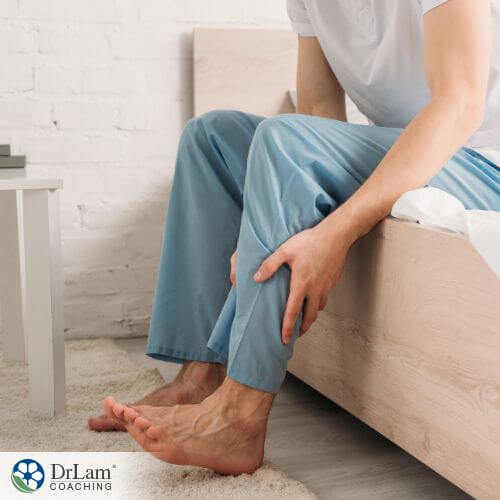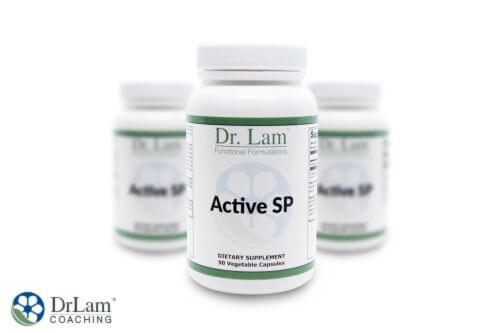 Peripheral artery disease, or PAD, affects roughly 200 million people globally. It impacts between 8 and 12 million Americans. The disease presents itself differently from patient to patient. Some patients may remain asymptomatic, while in others, the disease may progress to arterial ulceration, claudication, resting limb ischemia, and limb loss. Also, PAD can be seen as a cardiovascular disease with related high-risk fatal and non-fatal cardiovascular events, like stroke, occurring regularly. Furthermore, peripheral artery disease and sleep appear to share some connection. However, PAD can be improved through specific lifestyle changes.
Peripheral artery disease, or PAD, affects roughly 200 million people globally. It impacts between 8 and 12 million Americans. The disease presents itself differently from patient to patient. Some patients may remain asymptomatic, while in others, the disease may progress to arterial ulceration, claudication, resting limb ischemia, and limb loss. Also, PAD can be seen as a cardiovascular disease with related high-risk fatal and non-fatal cardiovascular events, like stroke, occurring regularly. Furthermore, peripheral artery disease and sleep appear to share some connection. However, PAD can be improved through specific lifestyle changes.
According to an article in the journal Atherosclerosis, peripheral artery disease (PAD) is a progressive disorder characterized by narrowing and/or blockage of large and medium-sized arteries, other than those that supply the heart or the brain. Usually, it’s a sign that you have built up fatty deposits in the arteries (atherosclerosis). Diabetes often causes severe PAD.
Also, this atherosclerotic disease affects the lower extremities more so than the upper extremities. It also typically affects the abdominal aorta and iliac arteries. Furthermore, poor circulation also affects the nerves in the legs and feet. PAD has the potential to lead to recurrent fatigue, cramping sensations, or pain. This pain is known as intermittent claudication, which is the most common symptom of lower extremity PAD.
It’s not uncommon for people with peripheral artery disease and sleep issues to have mild symptoms or no symptoms at all. Pain when walking or claudication may be a symptom for some people. Specifically, claudication could be characterized by muscle pain, cramping in the legs or arms that begins during exercise and ends with rest, and mild or severe pain in the calves. These are usually the first symptoms of PAD and tend to happen when you’re active. However, they may go away when you’re resting.
The symptoms of PAD tend to range from mild to severe. Some people with PAD may not experience any symptoms. However, three main problems that this condition can cause include:
There are various levels of severity of PAD, ranging from asymptomatic to entire blockage. Four distinct stages present different severity of symptoms or no symptoms. These stages include:
 In this stage, patients are yet to experience any blockage of their peripheral arteries. If identified at this point, the PAD has been caught early. As such, you have a greater chance of slowing or stopping the progression of the condition. Reduction of risk factors can be a focus at this stage.
In this stage, patients are yet to experience any blockage of their peripheral arteries. If identified at this point, the PAD has been caught early. As such, you have a greater chance of slowing or stopping the progression of the condition. Reduction of risk factors can be a focus at this stage.
In stage two, patients begin to experience pain and discomfort in their lower extremities. This is usually in their calves and tends to reoccur when you exercise, but goes away when you rest. Increased blockage in the peripheral arteries is usually to blame.
At the critical limb ischemia stage, the issue of peripheral artery disease and sleep sees patients experiencing pain at rest. This can also persist through the night. You may see signs of skin sores due to a lack of blood flow to the extremities. This interferes with the healing process.
Acute limb ischemia or ALI occurs when there is a sudden loss of blood flow to your extremities. As a result, your limbs may quickly deteriorate and ultimately die. At this stage, you’ll experience significant pain and tingling sensations, loss of pulse, cold and paleness in the extremities, and eventually paralysis. You have an emergency at this point and need immediate medical care.
Research suggests that there is a connection between sleep and peripheral artery disease. Seven to nine hours per night is the standard recommendation for the amount of sleep you need. However, over one-third of US adults do not regularly attain this minimum sleep goal. Studies suggest that getting less than five hours of sleep per night increases the risk for PAD.
A Swedish study found that sleeping fewer than 5 hours each night is associated with a 74 percent increased risk of developing PAD, in comparison to getting 7–8 hours of sleep. Insufficient nighttime sleep and daytime napping have been linked in the past to an increased risk of coronary artery disease.
Furthermore, PAD can disrupt your normal sleep cycle in three main ways.
Essentially, based on research findings, you need at least five or more hours of sleep each night to help ward off peripheral artery disease and sleep issues.
Several risk factors are linked to peripheral artery disease and sleep. These include:
 There's no cure for peripheral arterial disease and sleep issues related to it. However, you can make particular lifestyle changes and may have your physician prescribe certain medications that can help minimize the symptoms of the condition. You must see a doctor because your blood vessels are impacted by PAD. Additionally, medical care can help minimize your risk of developing other forms of cardiovascular disease, like coronary heart disease and heart attack. In severe cases or when initial therapies fail to relieve symptoms, surgery might become necessary.
There's no cure for peripheral arterial disease and sleep issues related to it. However, you can make particular lifestyle changes and may have your physician prescribe certain medications that can help minimize the symptoms of the condition. You must see a doctor because your blood vessels are impacted by PAD. Additionally, medical care can help minimize your risk of developing other forms of cardiovascular disease, like coronary heart disease and heart attack. In severe cases or when initial therapies fail to relieve symptoms, surgery might become necessary.
If you have PAD, two crucial changes that you can make are to quit smoking and exercise regularly. Furthermore, fixing PAD often centers on improving symptoms through lifestyle changes that include:
Research indicates that regular exercise helps to minimize the severity and frequency of PAD symptoms. At the same time, exercise can also reduce the risk of developing other cardiovascular diseases. The National Institute for Health and Care Excellence (NICE) recommends supervision of exercise routines as one of the first steps for managing PAD.
According to a review in the Journal of Cardiopulmonary Rehabilitation and Prevention, supervised treadmill exercise and home-based walking exercise each improved walking ability in patients with PAD. Your exercise program should involve at least 2 hours of supervised exercise a week.
Still, make it your goal to do some form of regular exercise daily for as long as you are able to given your health considerations. Walking for at least 30 minutes is one of the best forms of exercise you can do.
If you are suffering from peripheral artery disease and sleeping issues, you should stop smoking to prevent your condition from getting worse. In the process, you minimize your risk of developing another form of cardiovascular disease or death from related complications.
Nicotine tightens the arteries and tobacco smoke decreases good cholesterol and elevates bad cholesterol. One study in the BMJ: British Medical Journal found patients who stopped smoking didn’t develop new signs of claudication seven years later. However, those who continued to smoke saw a progression of PAD.
Adrenal NK is a specialized supplement formulated to support cardiovascular health, featuring Nattokinase as its key ingredient. This enzyme, which is extracted from natto—a traditional Japanese food made from fermented soybeans—has long been recognized in Japan for its potential benefits for the cardiovascular system. Dr. Lam's Adrenal NK offers a potent dose of 2000 FU (Fibrinolytic Units) of Nattokinase per serving, aiming to offer robust support for heart health. Nattokinase is particularly known for its ability to support healthy blood flow. It does this by breaking down fibrin, a protein that can lead to blood clot formation when present in excess amounts. By helping to regulate fibrin levels, Nattokinase aids in maintaining a balanced blood flow, which is crucial for overall cardiovascular health. By combining a potent form of Nattokinase with a precise dosage, Adrenal NK presents a targeted approach to support a well-functioning cardiovascular system. It aims to offer a comprehensive solution for those looking to maintain healthy blood flow and blood pressure levels, thereby supporting the heart and the circulatory system. Beware of taking blood thinners with this supplement as it does have a tendency to thin the blood.
 Another supplement by Dr. Lam is Active SP, a cardiovascular health-focused supplement that features Serratiopeptidase, commonly known as Serrapeptase, as its main ingredient. Dr. Lam's Active SP provides a generous 40,000 units of this proteolytic enzyme per serving, aiming to offer substantial support for heart health. Originating from the digestive system of silkworms, Serratiopeptidase has garnered attention for its unique abilities that could potentially benefit the cardiovascular system. One of the primary ways Serratiopeptidase supports cardiovascular health is through its capacity to break down non-living tissue. By doing so, it may help maintain clear arteries and support overall blood flow, crucial factors for cardiovascular health. The enzyme is also known for its ability to promote a balanced inflammatory response. Inflammation, particularly chronic inflammation, has been identified as a risk factor for cardiovascular diseases; therefore, managing a balanced inflammatory response is a plus for heart health. Additionally, Serratiopeptidase is known to support the body's natural healing processes, which can be especially beneficial following any cardiovascular incidents or surgeries. The enzyme helps to facilitate the body's natural mechanisms for tissue repair and may reduce recovery time, aiding in a quicker return to optimal heart function.
Another supplement by Dr. Lam is Active SP, a cardiovascular health-focused supplement that features Serratiopeptidase, commonly known as Serrapeptase, as its main ingredient. Dr. Lam's Active SP provides a generous 40,000 units of this proteolytic enzyme per serving, aiming to offer substantial support for heart health. Originating from the digestive system of silkworms, Serratiopeptidase has garnered attention for its unique abilities that could potentially benefit the cardiovascular system. One of the primary ways Serratiopeptidase supports cardiovascular health is through its capacity to break down non-living tissue. By doing so, it may help maintain clear arteries and support overall blood flow, crucial factors for cardiovascular health. The enzyme is also known for its ability to promote a balanced inflammatory response. Inflammation, particularly chronic inflammation, has been identified as a risk factor for cardiovascular diseases; therefore, managing a balanced inflammatory response is a plus for heart health. Additionally, Serratiopeptidase is known to support the body's natural healing processes, which can be especially beneficial following any cardiovascular incidents or surgeries. The enzyme helps to facilitate the body's natural mechanisms for tissue repair and may reduce recovery time, aiding in a quicker return to optimal heart function.
As always, consult with a healthcare professional before beginning any new supplement regimen, especially if you have pre-existing medical conditions or are taking other medications as these supplements can thin out the blood and increase bleeding risk.
Some of the other changes that you can make in your life to help PAD symptoms include:
PAD can cause recurrent fatigue and worsen chronic stress. This can lead to Adrenal Fatigue Syndrome (AFS). AFS is the non-Addison's form of adrenal dysfunction, where the body's stress response cannot keep up with life's chronic stressors. Cortisol is a key feature. Your body responds to stress through your adrenal glands which are a part of the Cardionomic circuit, a system of related organs and systems that helps to manage stress. Stress can increase your risk of PAD, and as such, you want to control the levels of stress in your life and improve symptoms of AFS as well.
If you have PAD and AFS, be sure to talk to a doctor aware of AFS to help manage your symptoms.
Untreated PAD has the potential to lead to a major amputation of the foot or leg. With this reality, the life expectancy for 60% of PAD amputee patients is just 2 to 5 years. It could also lead to heart attack, stroke, or death. However, you can live life a full life with this condition. Still, PAD life expectancy is challenging to determine due to these circumstances.
Peripheral arterial disease and sleep issues are connected and can impact your quality of life. You can make certain lifestyle changes to prevent PAD symptoms from worsening. You can make certain exercise and diet changes that can help to boost your health and wellness. Getting at least 5 hours of sleep per night, and preferably more than 7, can play a big role in reducing your risk of PAD. Visit and talk with your doctor if you suspect that you have symptoms of PAD or need help managing symptoms. Try systemic enzymes to help circulation if your healthcare provider approves.
If you would like to learn about the steps that you can take to improve your symptoms, the team at Dr. Lam Coaching can help. We offer a free, no-obligation phone consultation at +1 (626) 571-1234 where we will privately discuss your symptoms and various options. You can also send us a question through our Ask The Doctor system by clicking here.
Yuan, Shuai et al. “Sleep duration, daytime napping, and risk of peripheral artery disease: multinational cohort and Mendelian randomization studies.” European Heart Journal open vol. 3,2 oead008. 16 Mar. 2023, doi:10.1093/ehjopen/oead008 https://pubmed.ncbi.nlm.nih.gov/36936389/
Shu, Jun, and Gaetano Santulli. “Update on peripheral artery disease: Epidemiology and evidence-based facts.” Atherosclerosis vol. 275 (2018): 379-381. doi:10.1016/j.atherosclerosis.2018.05.033 https://pubmed.ncbi.nlm.nih.gov/29843915/
Davies, Alun. "The Practical Management of Claudication: As a Marker for Cardiovascular Disease It Needs Active Treatment." BMJ : British Medical Journal, vol. 321, no. 7266, 2000, pp. 911-912, https://doi.org/10.1136/bmj.321.7266.911. https://www.bmj.com/content/321/7266/911
There is clear connection between peripheral arterial disease and sleep. It can interfere with your sleep cycle through signs like pain or tingling in the feet, obstructive sleep apnea, and restless leg syndrome. Poor sleep also worsens your risk of severe complications of PAD, so it's important to take steps to manage the condition.
